Sourcing tumblers feels complicated. A bad choice can hurt your brand and waste money. I will show you how to choose the right product for your customers.
To source the best stainless steel tumblers, focus on four key areas. Choose the right material, like food-grade 304 or 316 steel. Insist on double-wall vacuum construction for temperature control. Verify safety certifications. And understand the importance of a proper initial cleaning for the end-user.
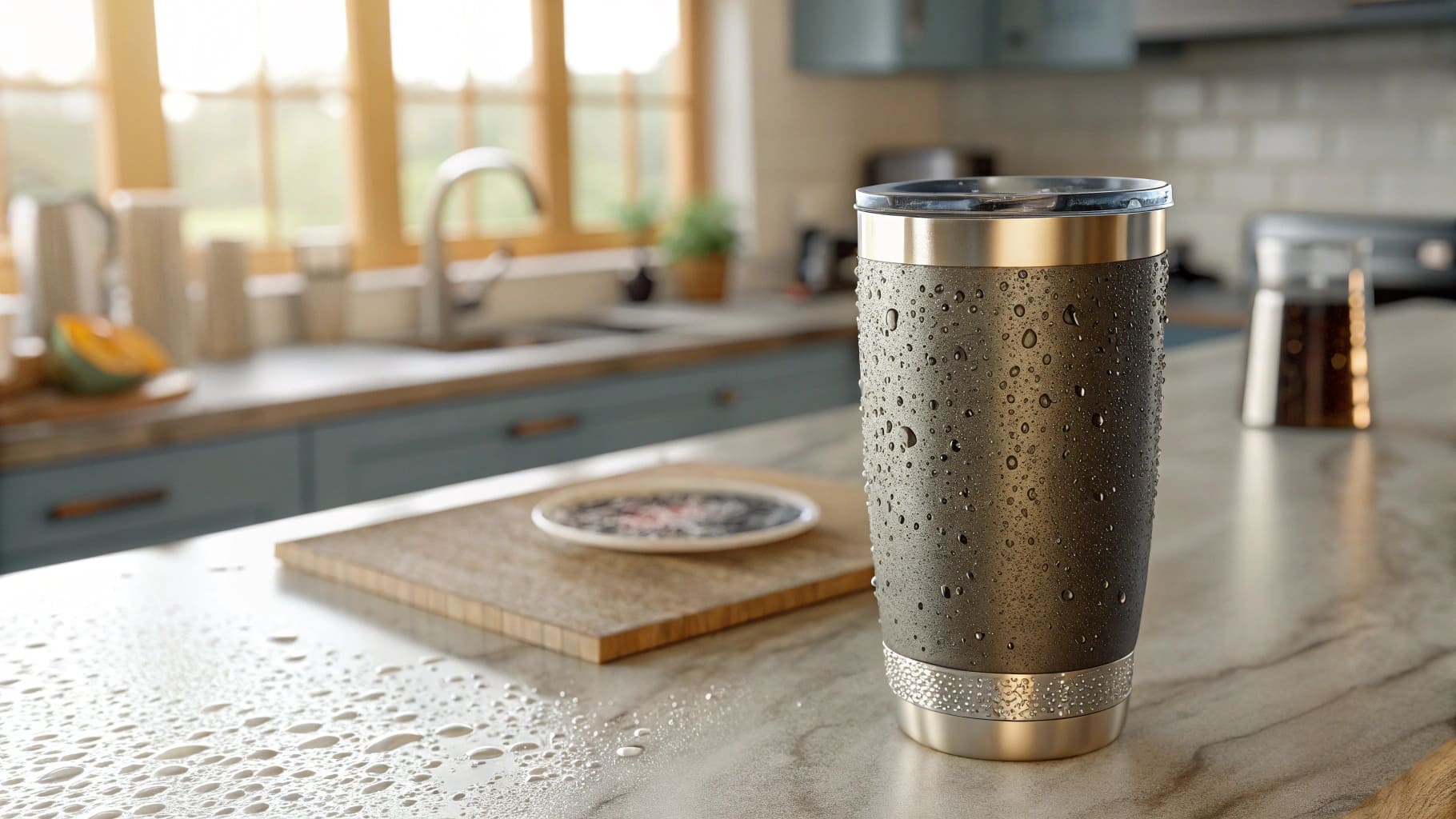
I've been in this business for a long time. I have talked with hundreds of buyers like you. I see the same questions and problems come up again and again. These issues can seem small, but they make a huge difference in the quality of the final product and your customers' happiness. Let's break down the most important questions I get. I want to give you clear answers so you can make the best decision for your company.
What is the Best Stainless Steel Material for Tumblers?
Choosing the right steel grade seems technical. Picking the wrong one can lead to customer complaints about rust or strange tastes. I will make the choice simple for you.
The best and most common material is 304 (18/8) stainless steel1. It is perfect for almost all drinks. For extra protection against rust from very acidic drinks, 316 stainless steel is a premium, more durable option.
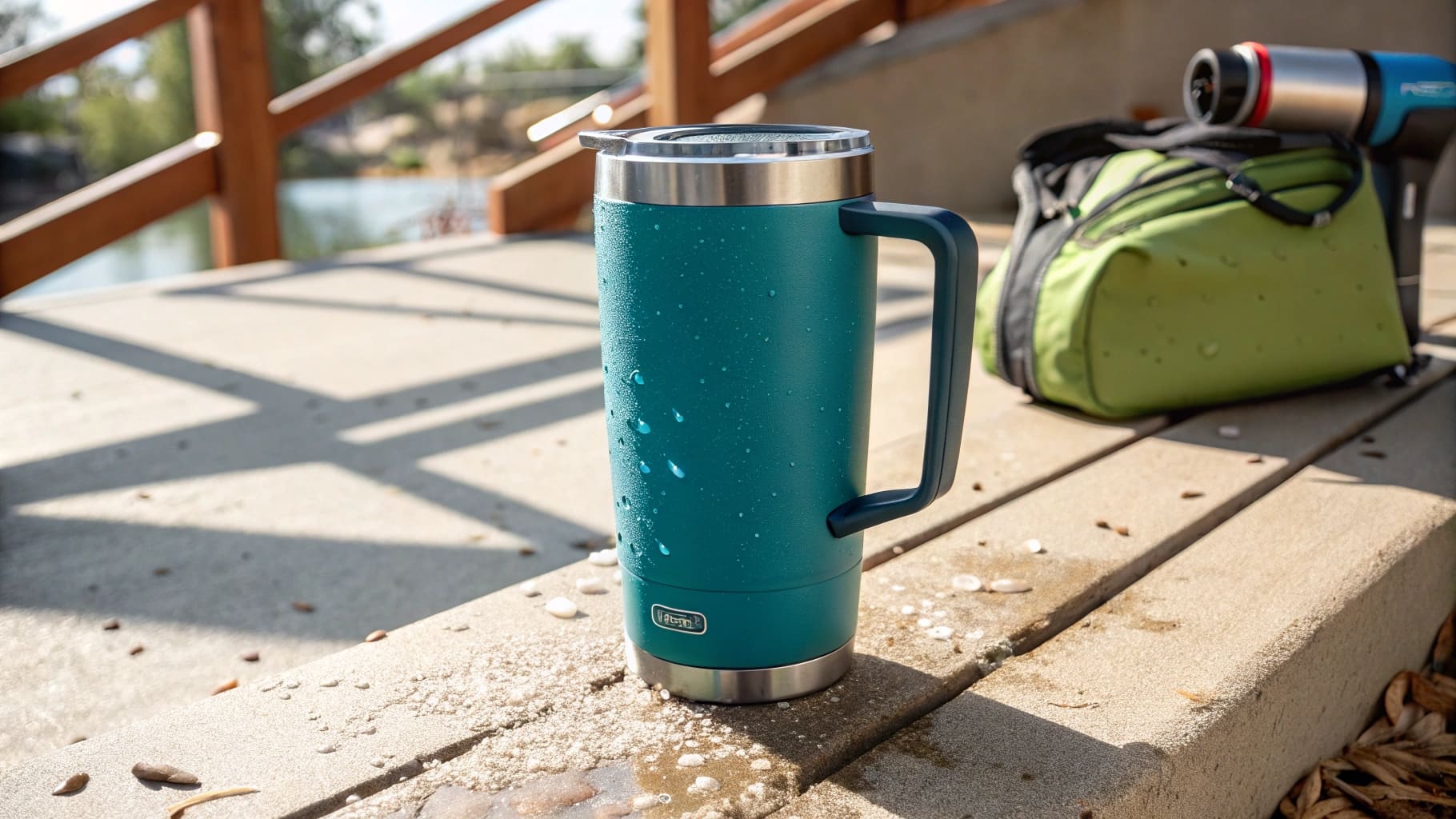
As a buyer, the type of steel is one of your most important decisions. It affects durability, safety, and cost. When I talk to clients, I always start here. One client, who was creating a line of tumblers for a health-juice company, was very concerned about acidic drinks like lemonade and tomato juice causing corrosion over time. We decided to use 316 stainless steel2 for his order. It cost a little more, but it gave him the confidence and marketing story he needed.
Understanding Steel Grades
The numbers refer to the steel's composition. Food-grade steel is designed to be safe for contact with things we eat and drink. 304 and 316 are the two main types you will see in high-quality tumblers. They are both excellent choices, but they have key differences.
A Quick Comparison
Here is a simple table to help you decide. For most businesses, 304 steel is the perfect balance of quality and cost. But if your brand focuses on premium quality or specific uses, 316 is worth considering.
| Feature | 304 (18/8) Stainless Steel | 316 Stainless Steel |
|---|---|---|
| Best For | General use, coffee, water, tea | Acidic drinks, marine environments |
| Corrosion Resistance | Excellent | Superior |
| Cost | Standard | Premium |
| Main Component | 18% Chromium, 8% Nickel | Adds Molybdenum for rust resistance |
How Do You Clean a Stainless Steel Tumbler for the First Time?
Your tumblers arrive from the factory. But small residues from the production process can affect the first drink. A simple first wash makes the experience perfect for your customer.
Before the first use, wash the tumbler with warm, soapy water and a soft sponge. For any lingering factory smell, a paste of baking soda and water works well. Rinse it completely and let it air dry.
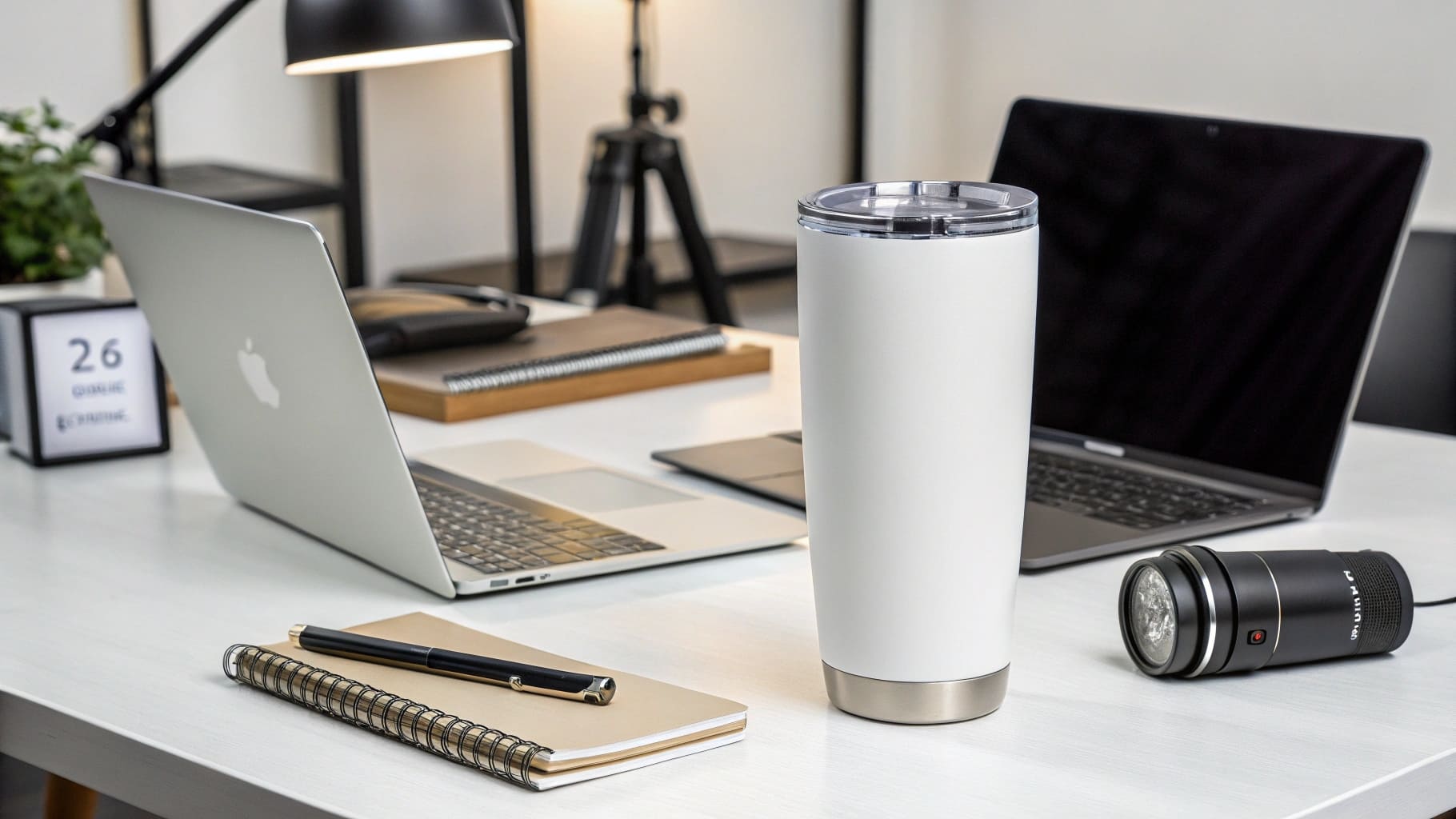
This first wash is a critical step that many people overlook. We always include this instruction with the products we ship. It ensures the end-user has the best possible experience right from the start. Think of it like washing new clothes before you wear them. It’s about freshness and removing anything left over from the journey from our factory to your customer's hands. This simple advice can prevent complaints about a "metallic taste" that isn't from the steel itself, but from dust or oils from manufacturing and shipping.
Why Initial Cleaning Matters
During production, tumblers can collect harmless dust and machine oils. These are non-toxic, but they can create a slight odor or taste. The initial wash removes these residues completely, leaving the tumbler clean and neutral for any beverage.
A Simple Step-by-Step Cleaning Guide
You can pass this simple guide to your customers.
- Use Gentle Soap: Add a few drops of dish soap into the tumbler.
- Add Warm Water: Fill it about halfway with warm water.
- Wash Gently: Use a bottle brush or soft sponge to clean the inside. Avoid steel wool or harsh scrubbers that can scratch the surface.
- Rinse Thoroughly: Rinse with clean water until no soap bubbles remain.
- Dry Completely: Turn it upside down to air dry, or wipe it dry with a soft cloth.
How Long Do Steel Tumblers Last?
You invest in a product to build your brand. A product that breaks easily will damage your reputation. Stainless steel tumblers are known for their incredible strength and value.
A well-made stainless steel tumbler can easily last for many years, sometimes even a lifetime, if cared for properly. This long lifespan is a major advantage and a strong selling point for eco-conscious consumers.
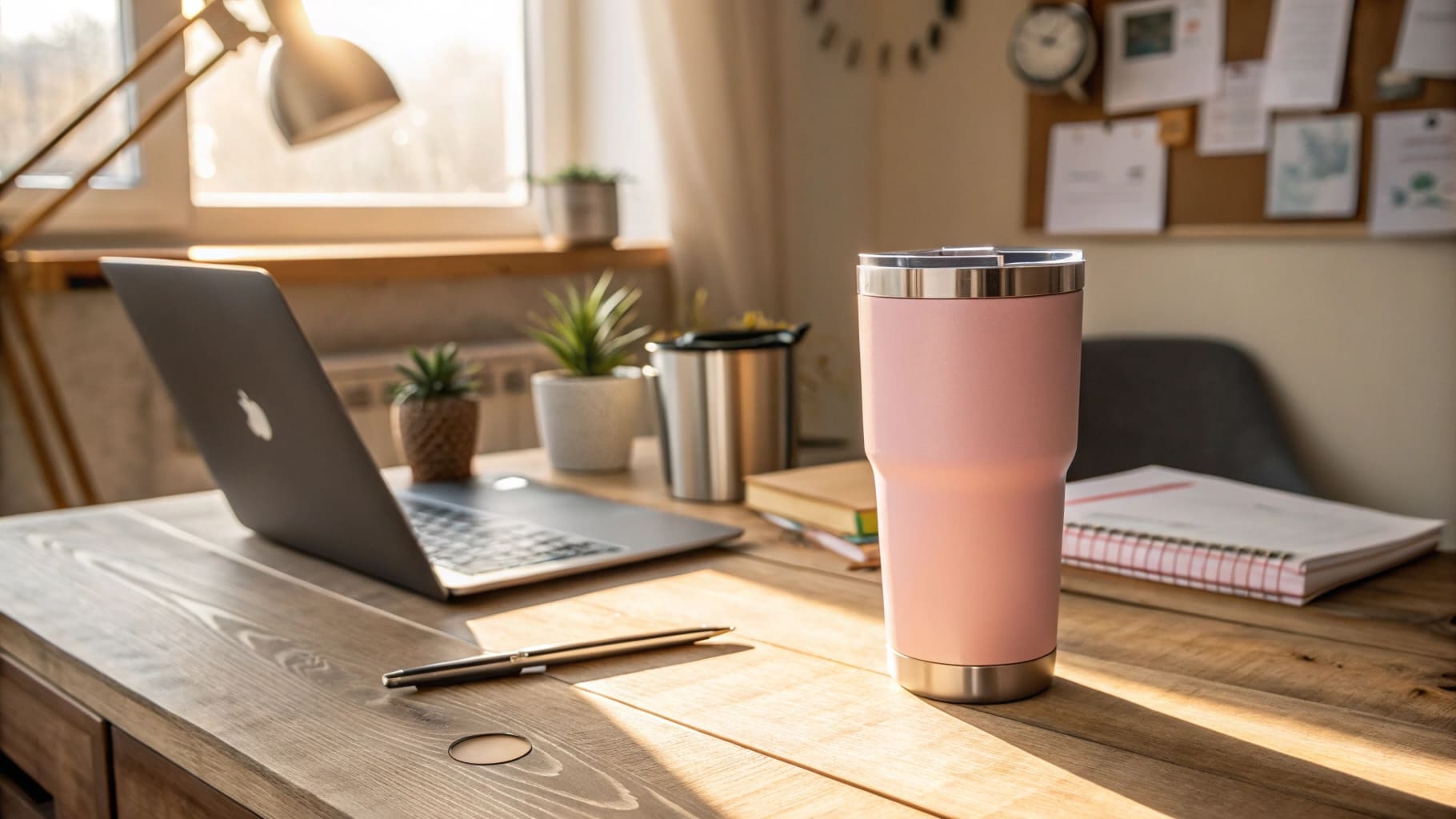
I still use a sample tumbler in my office that we made for a client in America over five years ago. It has been used almost every day for coffee and tea. It looks almost the same as it did on day one. This is the kind of quality and longevity that builds trust in a brand. When you sell a product that lasts, you are not just selling a tumbler; you are selling reliability. Your customers will appreciate the value and remember your brand for it.
Factors That Determine Lifespan
The lifespan of a tumbler depends on a few things.
- Quality of Steel: Higher-grade steel like 304 or 316 resists rust and damage better.
- Construction: A well-welded, solid build will withstand drops and daily use.
- The Finish: A quality powder coat or paint finish will resist chipping and scratches.
- User Care: Avoiding harsh detergents and abrasive cleaners preserves the steel's surface.
Comparing Tumbler Materials
Compared to other materials, stainless steel offers a superior combination of features.
| Feature | Stainless Steel | Plastic | Glass |
|---|---|---|---|
| Durability | Very High | Low-Medium | Low |
| Insulation | Excellent (Double-wall) | Poor | Poor |
| Taste Neutrality | Excellent | Can retain flavors | Excellent |
| Lifespan | Years to Lifetime | Months to Years | Can last, but fragile |
Why Is My Stainless Steel Tumbler Too Hot or Cold to Hold?
You pour a hot coffee into a new tumbler. But the outside becomes too hot to touch comfortably. The reason is simple and it points to a major flaw in the product's design.
A tumbler is too hot or cold to hold because it is made with a single wall of steel. This allows heat to transfer directly to your hand. Double-wall vacuum insulation completely solves this problem.

This is a common issue with cheap, low-quality tumblers. A procurement officer I know, Mark, once bought a batch of tumblers from another supplier to save money. His customers immediately complained that they couldn't hold their hot coffee. He learned a valuable lesson: the user experience is critical. A tumbler that is uncomfortable to hold is a failure, no matter how cheap it was. We only produce double-wall insulated tumblers at Icobottle because it's essential for a quality product.
The Problem with Single-Wall Designs
A single layer of steel offers no barrier against temperature. If the drink is hot, the outside of the tumbler gets hot. If the drink is ice-cold, the outside becomes slick with condensation and uncomfortably cold. It's a poor design for any drink meant to be held.
The Solution: Double-Wall Insulation
This is the industry standard for quality tumblers.
- Two Layers of Steel: An inner wall and an outer wall.
- Vacuum Gap: We remove the air between the two walls. This creates a vacuum.
- No Temperature Transfer: Heat or cold cannot travel through the vacuum. The drink's temperature stays inside, and the outside of the tumbler remains comfortable to the touch. This design also keeps drinks hot or cold for hours, which is a huge benefit for the user.
Is It Safe to Drink Out of Stainless Steel Tumblers?
Customers today are very concerned about product safety. News about chemicals in plastics makes people worry. You need to assure them that your products are completely safe to use every day.
Yes, it is extremely safe. Food-grade stainless steel3 like 304 (18/8) is a stable, non-toxic material. It is BPA-free and will not leach harmful chemicals into your beverages, which is why it's used in kitchens worldwide.
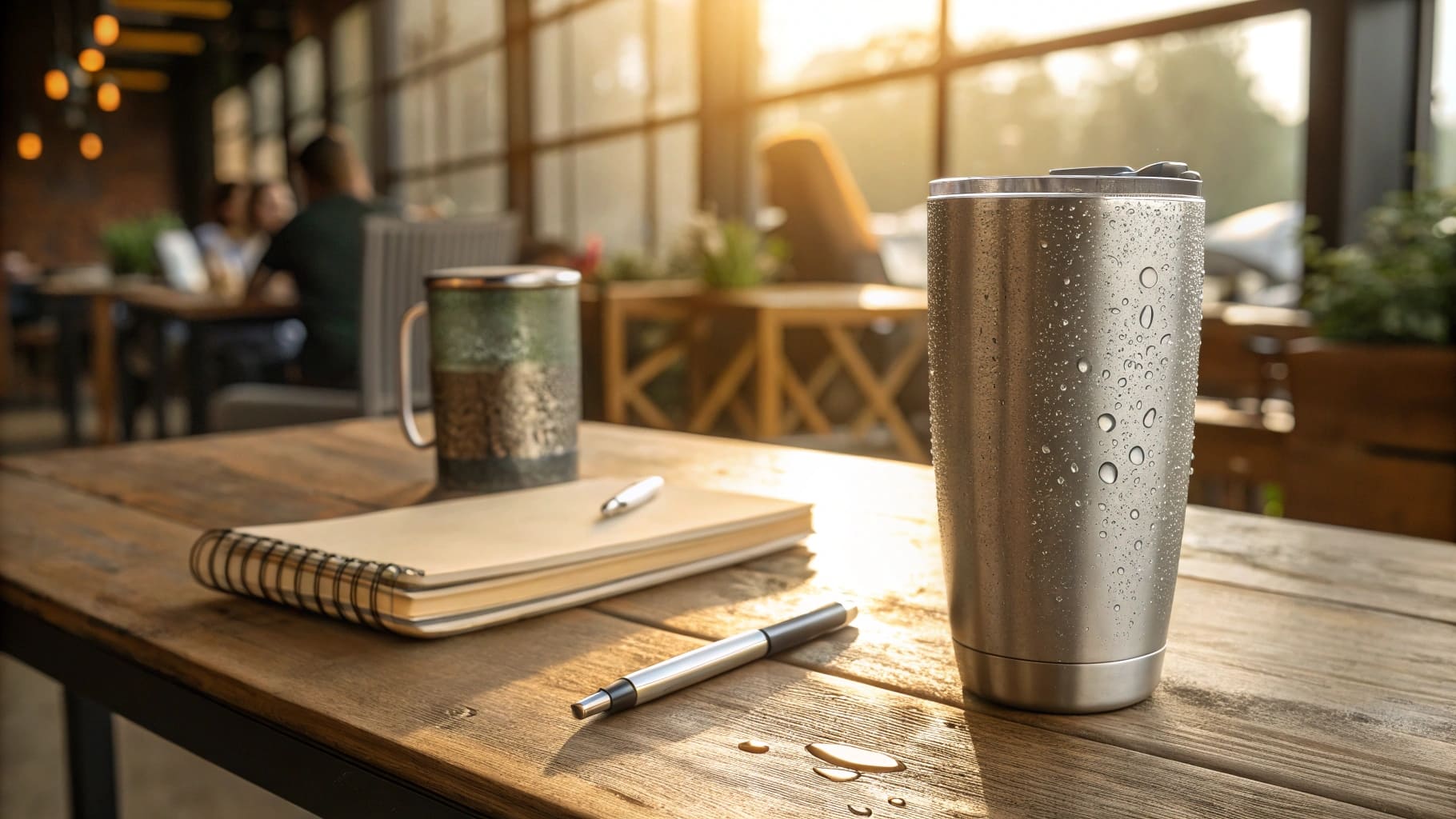
I’ve had many conversations with buyers who are rightly concerned about safety. Mark, the Canadian buyer, told me about a nightmare scenario where a supplier sent him fake safety certificates. This is a huge risk for any business. That's why we at Icobottle provide all our real, verifiable testing reports and certifications to our clients. You should always demand this proof from any supplier. It protects your business, your brand, and most importantly, your customers.
What "Food-Grade" Really Means
"Food-grade" means a material is certified as safe for direct contact with food and drinks. For stainless steel, this means the metal is stable and won't react with what you put inside it. 304 stainless steel is also called 18/8 because it contains 18% chromium and 8% nickel. These elements are what make it resistant to rust and corrosion, ensuring its purity and safety over time. It’s the same type of steel used for professional cookware and surgical instruments.
Verifying Safety: Ask for Certificates
Never just take a supplier's word for it. Always ask for documentation.
- FDA: For products sold in the U.S., make sure the material meets Food and Drug Administration standards.
- LFGB: This is the German food safety standard, which is very strict and respected across Europe.
- BPA-Free: Always confirm that all parts, including the lid, are certified BPA-free4.
A trustworthy supplier will provide these documents without hesitation.
Conclusion
Sourcing the right tumbler is simple. Focus on quality 304 steel, double-wall insulation, and verified safety. These choices build a great product and a trusted brand.
-
Explore the advantages of 304 stainless steel, a popular choice for tumblers, known for its durability and safety. ↩
-
Learn why 316 stainless steel is preferred for acidic drinks and marine environments, offering superior corrosion resistance. ↩
-
Understanding food-grade stainless steel is crucial for ensuring safety in food contact materials. Explore this link to learn more. ↩
-
Knowing about BPA-free products helps consumers make safer choices. Check out this resource to understand its significance better. ↩

